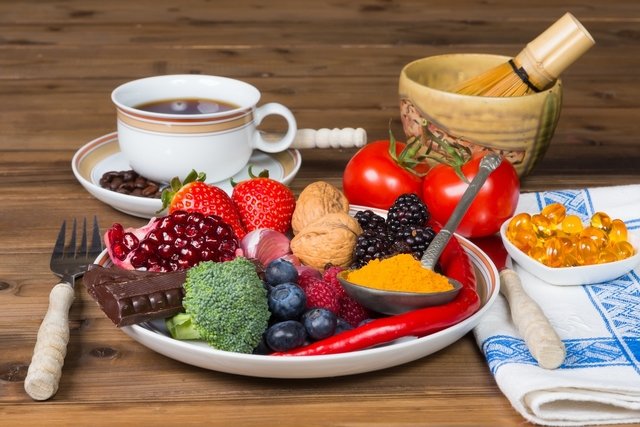Polyphenols: what they are, benefits and in which foods they are found
Polyphenols are organic compounds found abundantly in the tissue of plants and fruits, whose function is to protect them from insects, ultraviolet radiation and microbial infections. These compounds are ingested through the diet, being found in foods such as red wine, green tea, chocolate and turmeric, for example.
Thanks to their properties, mainly antioxidant and anti-inflammatory, polyphenols provide various health benefits, as they could help regulate metabolism, weight, prevent chronic diseases and avoid cell proliferation.
More than 8000 types of polyphenols have been identified, the best known and most studied being catechins, resveratrol, curcumin, anthocyanins and flavonoids.

Main benefits
Polyphenols are currently the target of study due to their possible health effects, and although most of these have been performed in animals or in vitro, their consumption has been associated with the following benefits:
1. Prevent neurodegenerative diseases
Some polyphenols such as curcumin, resveratrol and catechins could protect against neurodegenerative diseases such as Alzheimer’s, Parkinson’s, Huntington’s disease and dementia, due to their antioxidant, immunomodulatory and scavenging properties that protect brain cells and inhibit the accumulation of a protein that causes toxic effects at the neuron level, called beta-amyloid, and which is directly related to Alzheimer’s disease.
Likewise, it is believed that these compounds found in chocolate, grape juice and in a plant called ginkgo biloba, for example, can also favor memory and concentration, because they improve the flow of blood circulation at the cerebral level.
2. Caring for heart health
Polyphenols in general help to improve heart function, due to their anti-inflammatory and antioxidant properties that reduce platelet activity, thus improving circulation and helping to control blood pressure.
Likewise, flavonoids and resveratrol help to lower LDL cholesterol, reducing the risk of suffering cardiovascular diseases, such as atherosclerosis, for example.
See all the properties of resveratrol and how it should be consumed.
3. Prevent cancer
Flavonoids, flavones, catechins, anthocyanins and isoflavones are polyphenols that thanks to their antioxidant property can neutralize free radicals, inhibiting tumor cell growth and thus decreasing the risk of suffering from some types of cancer such as colon, prostate, breast, endometrial and epithelial cancer.
4. Help fight obesity
Some polyphenols such as catechins, resveratrol and curcumin have been associated with anti-obesity effects, as they promote weight loss or help maintain weight loss. This is because they may inhibit fat accumulation in the body, reduce inflammation, increase energy expenditure and promote fat oxidation.
Learn how to use turmeric to get its benefits or watch the video below:
5. Prevent and improve diabetes
Polyphenols, mainly anthocyanins, have been associated with both the prevention and control of type 2 diabetes because they exert anti-inflammatory and antioxidant effects that help protect the cells in the pancreas responsible for producing insulin, a hormone that regulates blood sugar.
In addition to this, they have been associated with a decrease in carbohydrate digestion at the intestinal level and with the regulation and alteration in glucose transport, thus helping to control blood sugar.
6. Regulating bacterial flora
Polyphenols may have a high potential to interact with the intestinal microbiota and provide health benefits, acting as a type of probiotic that helps improve digestion and the functioning of the gastrointestinal tract. It is thought that this may be because the metabolites produced by the polyphenols could inhibit the growth of invasive gut bacterial species.
Some evidence suggested that green tea extract might modulate the growth of bacteria such as Clostridium difficile, Escherichia coli, and Salmonella typhimurium; or that blueberry juice extract promotes the presence of beneficial bacteria, such as thes bifidobacteria, for example. However, more studies are needed to prove this.
See more about the benefits of probiotics.
7. Relieve symptoms of menopause and PMS
Some polyphenols, such as isoflavones, flavones, resveratrol and lignins help relieve symptoms of menopause and premenstrual syndrome (PMS), because they regulate and balance estrogen levels in the body.
Learn more about phytoestrogens and their benefits.
Foods containing polyphenols
The table below lists the most common types of polyphenols and in which foods to find them:
It is important to include these foods in a varied and balanced diet in order to obtain their benefits.
Currently there are supplements that can be purchased in pharmacies or natural stores that provide these compounds, but they should be used with caution and always under the guidance of a nutritionist or health professional.
Comments
Post a Comment